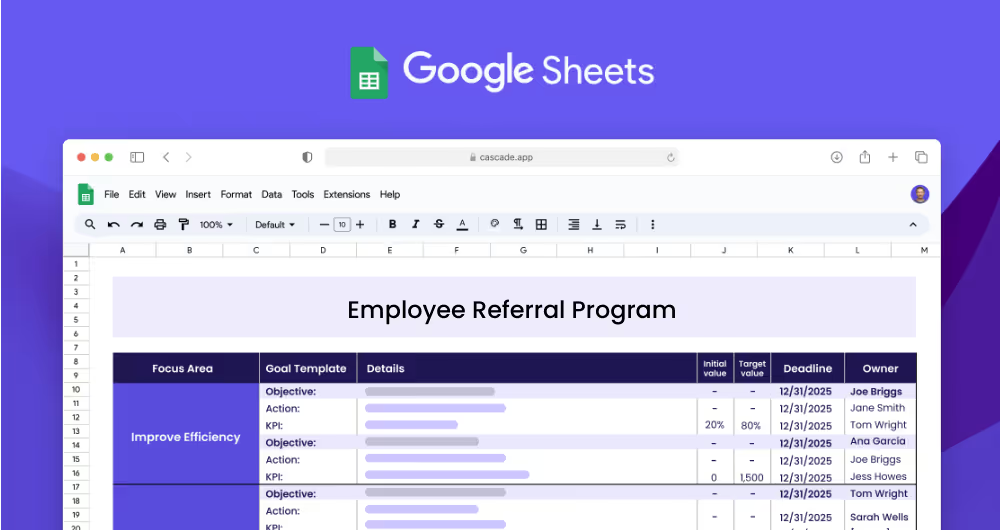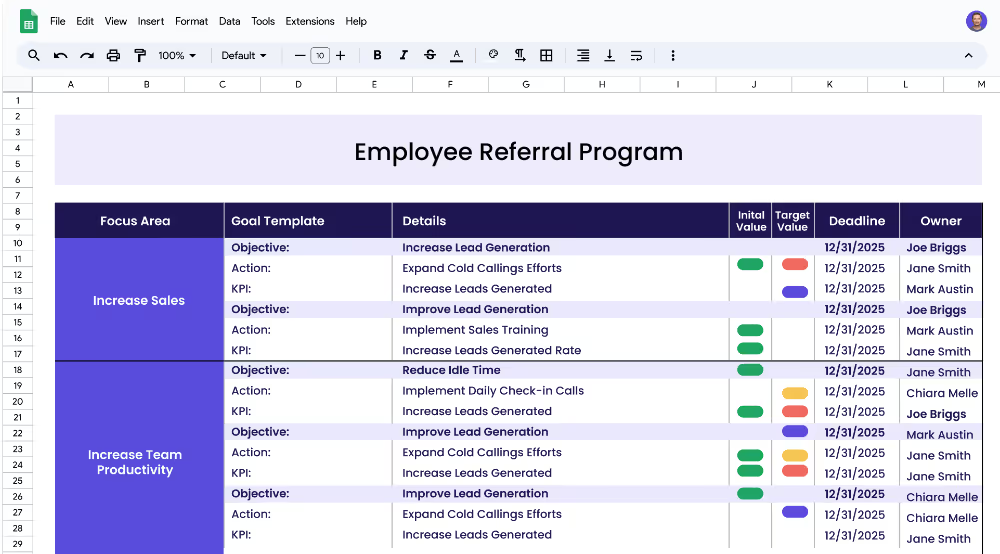An employee referral program is a recruitment strategy used by employers to hire new employees. It involves existing employees referring their friends, family, and colleagues to fill job vacancies within the company. By incentivizing existing employees to refer their contacts, employers can access a larger pool of potential candidates, reduce the time and cost of their recruitment process, and benefit from a pre-vetted list of quality applicants.
Each focus area has its own objectives, projects, and KPIs to ensure that the strategy is comprehensive and effective.
The Employee Referral Program template is designed to help HR teams create and implement employee referral programs. This template provides guidance and structure to help HR teams define their focus areas, set measurable targets and objectives, and implement related projects to achieve their goals. It is suitable for businesses of all sizes and industries.
The first step in creating an employee referral program is to define your focus areas. Focus areas are the overarching goals that you are trying to achieve with your program. Examples of strategic focus areas that could fall under a Employee Referral Program could be: Create an Employee Referral Program, Monitor Employee Referral Program, and Reward Employees for Referrals.
Once you have identified your focus area, you can start to think about the objectives that could fall under that area. Objectives are specific outcomes that you are looking to achieve, such as increasing the number of referrals or increasing the rate of successful referrals.
Setting measurable targets, also known as Key Performance Indicators (KPIs), is an important part of the employee referral program. KPIs are used to track performance and measure progress towards objectives. Examples of KPIs could include increasing the number of referrals, increasing the rate of successful referrals, or increasing the amount of referral rewards.
Once you have identified your objectives and set measurable targets, you can start to think about projects or actions that you can implement to achieve your KPIs. Examples of projects could include creating an internal campaign to educate employees about the program, creating incentives for employees to participate in the program, or establishing a system to track performance.
If you’re ready to accelerate your strategy beyond conventional methods and see tangible results sooner, consider using Cascade Strategy Execution Software. Unlike spreadsheets, which can become cumbersome and limit scalability, Cascade offers a robust platform capable of supporting real-time updates, centralized collaboration, and automated reporting. Sign-up for free or book a demo with one of our strategy experts to begin reinventing the way you manage strategies immediately!


